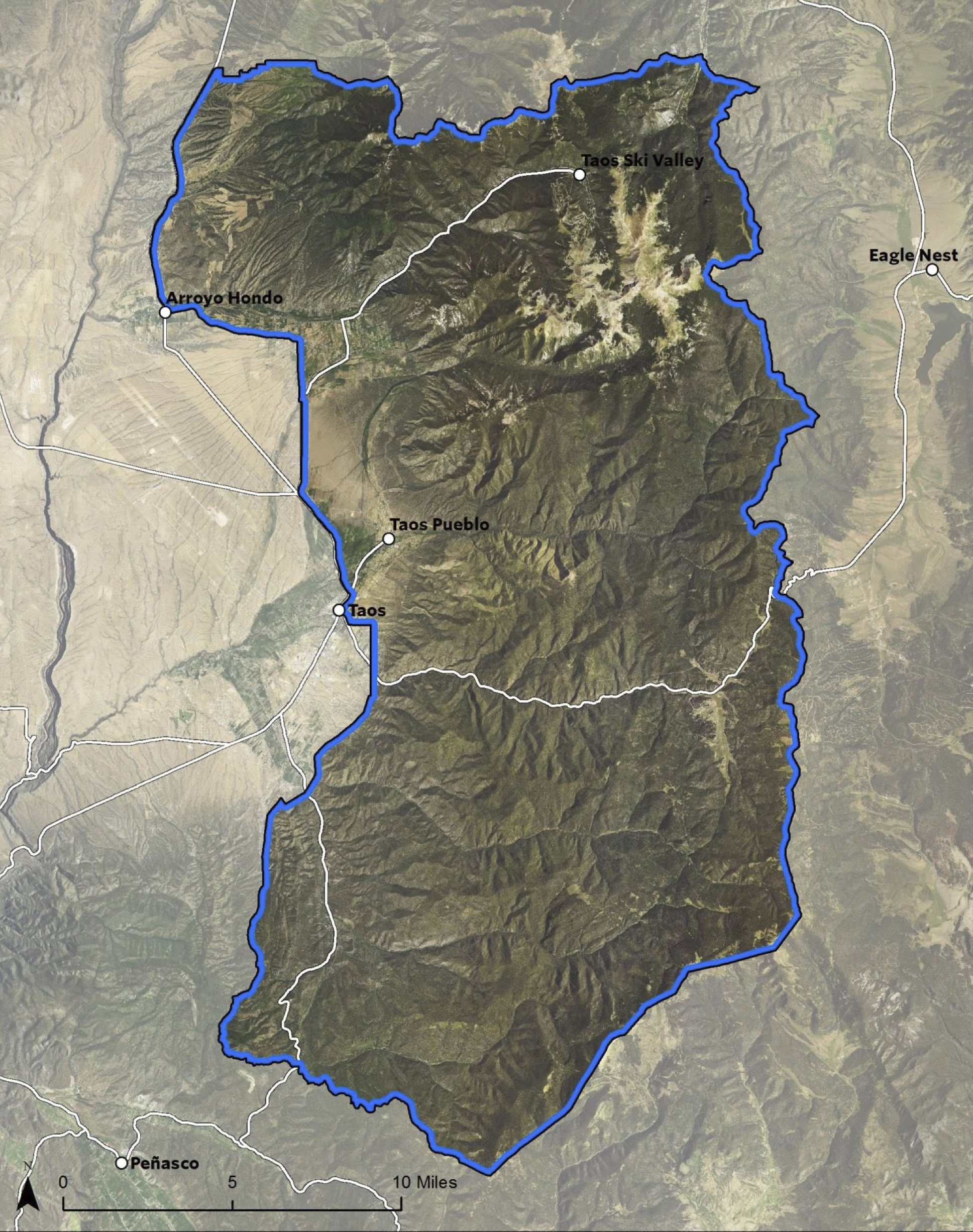Forest restoration protects and enhances outdoor activities
story and photos By j.r. logan
The forests and rivers along the west slope of the Sangre de Cristo Range have long been a haven for those looking to escape to the outdoors.
Whether to hunt, fish, camp, ski, raft, hike or bike, these mountains hold something for almost everyone. And there’s a lot of folks working together in and around Taos to make sure these forests are around for future generations to enjoy as well.

More and more, major wildfires are erupting across the West with unprecedented size and severity, threatening not only lives and property, but the very forests we all rely on for sanctuary and fun.
New Mexico has been especially hard hit by catastrophic fires in recent years, with mega-blazes tearing through hundreds of thousands of acres of forested areas, leaving nothing but charred moonscapes and devastated creeks and rivers in their wake.
The story of how wildfires came to threaten the very existence of our beloved forests – goes back more than a century. And ironically, it was partly our earnest efforts to stop wildfire altogether that got us into this mess.
Many forest species in the Southwest evolved with wildfire as a normal and necessary part of the ecosystem. Relatively small, low-intensity fires burned as frequently as every seven years, helping to reduce competition for older, more established trees by burning smaller seedlings, while also cycling nutrients and promoting growth of grasses and forbs.
Ponderosa pine thrives with low-severity wildfire cleaning out undergrowth. Ponderosa stands were historically open, park-like areas dominated by large, majestic trees.

By 1880, people got very good at stomping out any and all kinds of wildfire, inadvertently upsetting the balance natural wildfire had played for eons.
Now when wildfires start, these fuels supercharge the fire behavior, leading to the kinds of catastrophic blazes that don’t “clean out” the forest, but decimate it completely.
In the face of this crisis, tribes, governments, conservation and recreation groups, businesses, land managers and everyday residents have banded together to restore these forests and improve their resilience to wildfire – increasingly urgent in the face of a hotter, drier climate, adding to the likelihood of extreme fire events.
In 2015, these groups formed the Taos Valley Watershed Coalition to prioritize forests around Taos most in need of attention, supporting one another in funding and manpower to get work done. By 2020, the coalition brought in over $3 million to pay for thinning and prescribed-burn promotion, vital to getting these ecosystems safely back into balance.
The focus of this work is primarily preventative — reducing the risk of truly catastrophic wildfires destroying forests and rivers. By preventing major fires, the coalition seeks to ensure long-term survival of wildlands for future generations.
The coalition prioritized work to safeguard the Río Hondo and Río Pueblo – both productive fisheries and major tributaries to the Río Grande.
The group also focused on protecting Taos Ski Valley, so the ski area avoids a major blaze and remains a draw for both locals and visitors, improving the outdoor experience for anyone heading out to enjoy the mountains.

For instance, the area between Valdez and San Cristóbal – popular with hikers, mountain bikers and hunters – since having over 500 acres thinned and burned, has attracted an influx of deer, elk and wild turkey, which browse on fresh grasses.
Restoration areas opened the forest, making it easier to explore on foot and horseback, so you don’t have to bushwhack your way through thick undergrowth. Similarly, the coalition has done small thinning projects at campgrounds up Río Hondo to showcase the benefits of thinning for people and the environment.
All this isn’t to say this work isn’t disruptive – when crews hit the ground with chainsaws, these areas can be busy and noisy. And until forest slash is burned or chipped, these sites are hard to walk through and look unkempt.
While initially inconvenient, the work of the Taos Valley Watershed Coalition is striving to make enjoying the outdoors safer and more enjoyable for everyone – now and for centuries to come.

